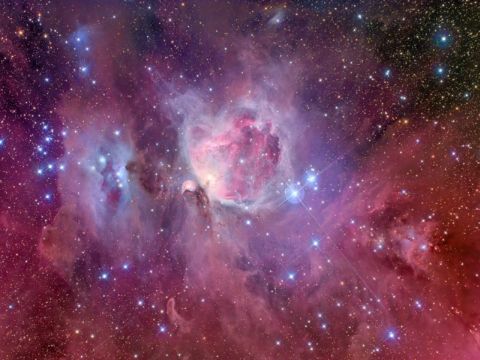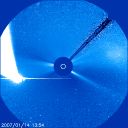 This may be a once in a lifetime celestial event for Earthlings to witness. A sun-grazing comet, McNaught, is visible to the naked eye in broad daylight! If you have clear skies, you should step outside today and try to observe the comet.
This may be a once in a lifetime celestial event for Earthlings to witness. A sun-grazing comet, McNaught, is visible to the naked eye in broad daylight! If you have clear skies, you should step outside today and try to observe the comet.
SOHO also “sees” the comet, but it’s so bright in the sky it badly blooms the image.
Image: SOHO LASCO C3 view of McNaught.
Read more about how to observe this spectacle from SpaceWeather.com:

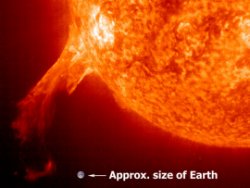 NASA Scientists studying the relationship between the Sun’s magnetic activity and the peak number of sunspots, have discovered a six-year relationship between the two phenomena. If the trend continues as it has since 1868, we should experience a count of about 160 sunspots during the next solar cycle peak, due in 2011.
NASA Scientists studying the relationship between the Sun’s magnetic activity and the peak number of sunspots, have discovered a six-year relationship between the two phenomena. If the trend continues as it has since 1868, we should experience a count of about 160 sunspots during the next solar cycle peak, due in 2011. 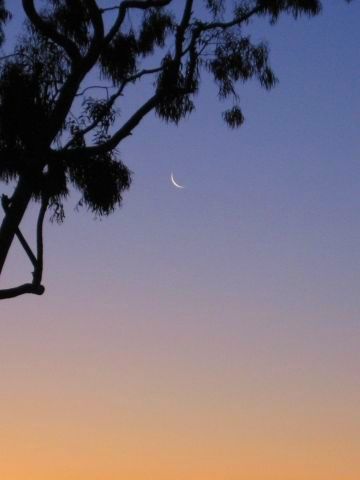 On a very cold (for us) and clear December morning, the moon showing a thin crescent rises above the eastern horizon.
On a very cold (for us) and clear December morning, the moon showing a thin crescent rises above the eastern horizon. 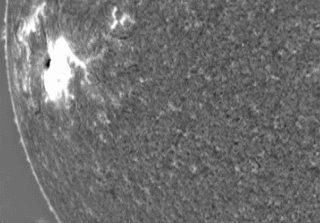 This may be more evidence that the Sun is entering one of it’s most active
This may be more evidence that the Sun is entering one of it’s most active 
 Earth-orbiting satellites detected a major X9-class solar flare this morning at 1035 UT (5:35 a.m. EST). The source: big, new sunspot 929, which is emerging over the Sun’s eastern limb. GOES-13 captured this X-ray image of the blast:
Earth-orbiting satellites detected a major X9-class solar flare this morning at 1035 UT (5:35 a.m. EST). The source: big, new sunspot 929, which is emerging over the Sun’s eastern limb. GOES-13 captured this X-ray image of the blast: